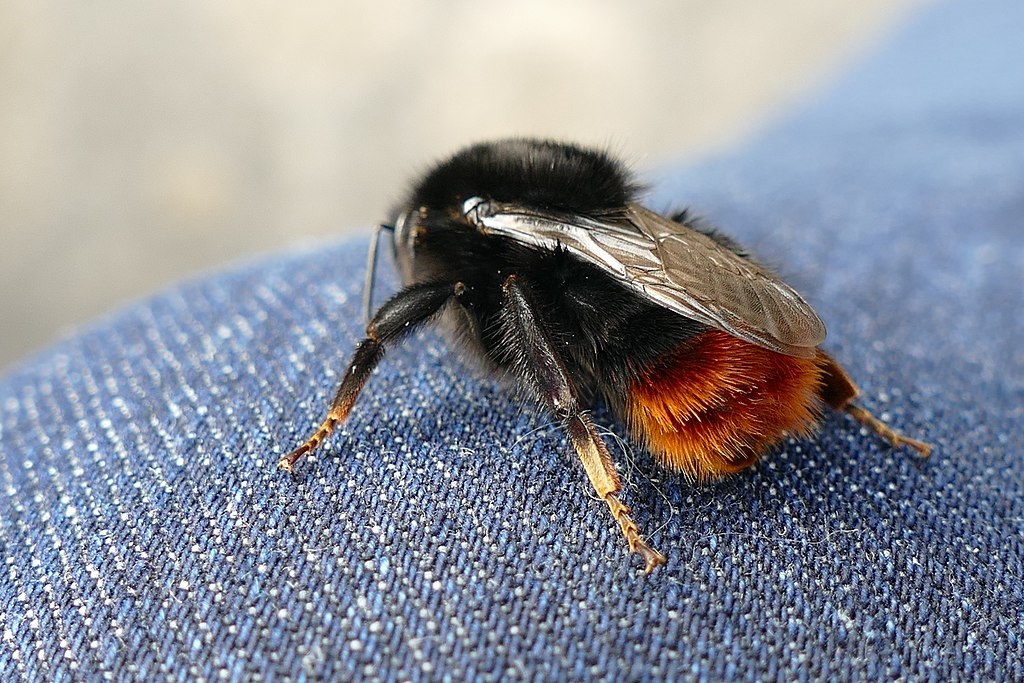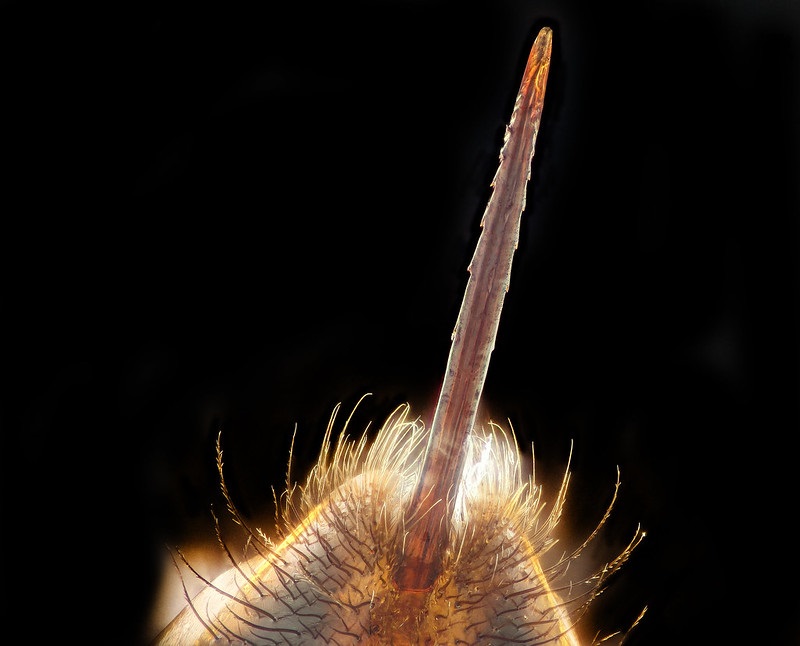

We’re here to help! Wild Yards is a completely free website that is 100% dedicated to helping you create a wildlife-friendly, sustainable yard. Read more
WildYards is reader-supported. When you buy a product through a link on our site, we may earn a comission. Every product is independently selected by our (obsessive) editors and our reviews are unbiased and objective. Read more about our mission or our privacy policy.
When out and about in your backyard or tending to your flowers, it’s possible you’ll come across more than a few flying critters – bees, if you’re lucky! Bees tend to be unlikely to sting you unless they feel threatened – but if they are, can bees sting you through your jeans?
Yes, bees can sting through jeans. Although you are unlikely to get stung unless you are keeping a hive, or you accidentally threaten a bee, they can still hurt you regardless of the clothes you wear.
In this guide, we will take a quick look at bee stings in general, and what you need to know with regard to wearing certain clothing around the honey-makers. While you’re in the process of lining up beautiful clematis that attract bees, it’s a great idea to know how to conduct yourself.
Are bee stings powerful?
Yes – bee stings are powerful enough to puncture your skin as well as your clothes! However, unlike wasps and hornets, many bee species don’t tend to be particularly aggressive.
A bee’s stinger is so impactful thanks to the way it is shaped, and how it moves in and out of its targets. The bee’s stinger, while difficult to see with the naked eye, is actually shaped a little bit like a saw blade – it’s serrated.
This means that, effectively, a bee doesn’t actually sting you – it very quickly, and sharply, saws into your skin! As you now know, that goes for your clothes, too.

Should I wear jeans around bees?
If you are really worried about being stung by bees, then jeans aren’t going to be your saving grace. Consider the protective clothing and headgear that beekeepers wear, for example. They protect themselves carefully for a reason!
Jeans are made from very light denim, which will not stand up against the serrated edges of a bee’s stinger. It’s why thicker materials are normally recommended when you are handling bees in person.
For example, leather is considered a thicker choice in material that could stand up to a bee sting. However, it is not a guarantee.
How do I avoid being stung by a bee?
To avoid being stung by bees, you need to be very careful with the way you conduct yourself. While you may not intend to hurt bees (and I certainly hope that’s the case), they can be quite sensitive and get the wrong impression.
Some pest removers suggest that bees are easily aggravated by both erratic movement, threats to their hive, and disruption to their routine. Most worker bees will have a clear duty in mind – to collect pollen, and to protect the queen at all costs.
Therefore, if you head into a beehive or nest without due care or protection, you are at the mercy of the swarm! Even beekeepers find that they get stung sometimes – but because it’s something they do regularly, they are unlikely to find it much of a problem.
Otherwise, simply conduct yourself in a gentle, calm and slow-moving fashion if bees are out in force. They are ardent workers, and any disruption or threat of an attack will throw them into protection mode. They are best enjoyed from afar – dipping in and out of your flowers!
Of course, if you are a seasoned beekeeper, and know how to gently handle bees through training and experience, then you will already know the do’s and don’ts. The bottom line is – leave a bee, be!
Do I have to dress a specific way around bees?
No, it’s not necessary – but remember that thin fabrics such as cotton will be all the more penetrable compared to denim and polyester! Those stingers can really probe deep – all the more power to bees, then, who can easily scare off bigger predators than you (bears, for example), if they swarm out in force!
If you’re in the process of hosting bees in your backyard, just remember to give them space. Maybe set up some music that bees love to hear – and make sure you have an array of lovely blooms that they can dip in and out of.
